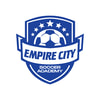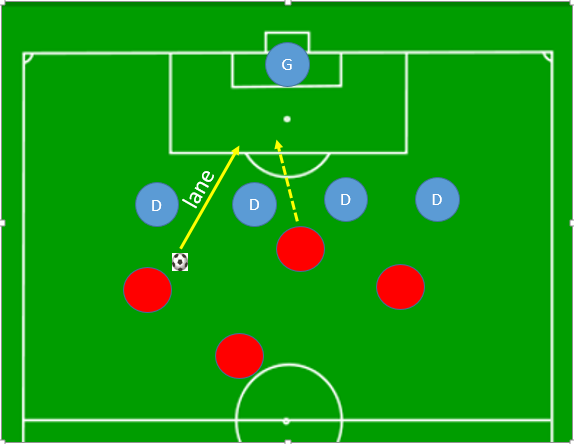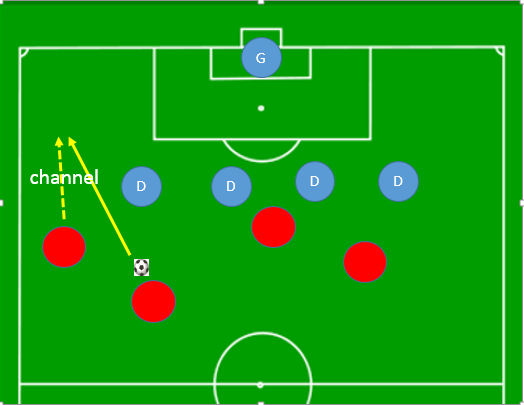|
There’s nothing more exciting than seeing a well-executed through ball that splits the defense that is anticipated by your striker who runs on to it and blasts it into the net! In recent years, teams like Barcelona, Bayern Munich and Manchester City have all gained attention for their style of play. Barca in particular (and Spain at the international level) have relied on a style that utilizes taking advantage of passing channels to create scoring opportunities. In essence, they all use possession to penetrate. The idea is to utilize passing and player movement to create gaps between defenders for attacking players to run into and for the ball to be played through- the KILLER PASS. The killer pass is the pass that creates a goal-scoring opportunity. Players that can play these combinations in and around the box become the most effective players. PASSING LANES VS. CHANNELS Passing lanes used to be called “gaps between defenders”. It is a space available for a ball to be passed through, typically on the ground. The “gap” must be wide enough so that no defender can extend the leg to cut off the pass. Or the passing distance must be short enough and the pass hard enough such that defenders don’t have time to react. The purpose is to play a ball into space behind the defense for another attacker to run into- the KILLER PASS. If it’s inside the penalty box it will set up a great scoring opportunity. Anywhere else in the field it will open up space and keep forward progression moving. A channel is most commonly referred to as the space between the most outside defender and the side line. It used to be called playing the ball down the side or the wing. From a passing technical perspective the difference between passing between two defenders or one defender and the side line is that the side line acts as a passive defender. It restricts the space available, but unlike a person, it cannot move to intercept the ball. If the situation is as in the above diagram, and the space down the side is available, a pass should follow to set the runner free and generate the cross into the penalty box. A pass on the ground will be easier to control for the receiving player, but there must be enough space to play the ball through. A ball over the top wouldn’t necessarily be called a pass into the “channel. It is easy to see how channel and lane can be used interchangeably. What matters is the concept of having space for a pass between defenders, or space for a pass between the most outside defender and the side line. Key Attacking Points:
3 Comments
Neil Cunningham
8/14/2021 01:42:51 pm
I live in Denver and want to get back to coaching 11-12 year old's. his ia an age when kids can learn quickly, but most coaches treat them as little kids. Your explanation and two simple diagrams are clear.
Reply
3/27/2023 09:55:53 pm
Such an informative article. I want to read more from you. Thank you for sharing.
Reply
Leave a Reply. |
Coach Shaver"Playing the Beautiful Game" Archives
February 2019
Categories |



 RSS Feed
RSS Feed
